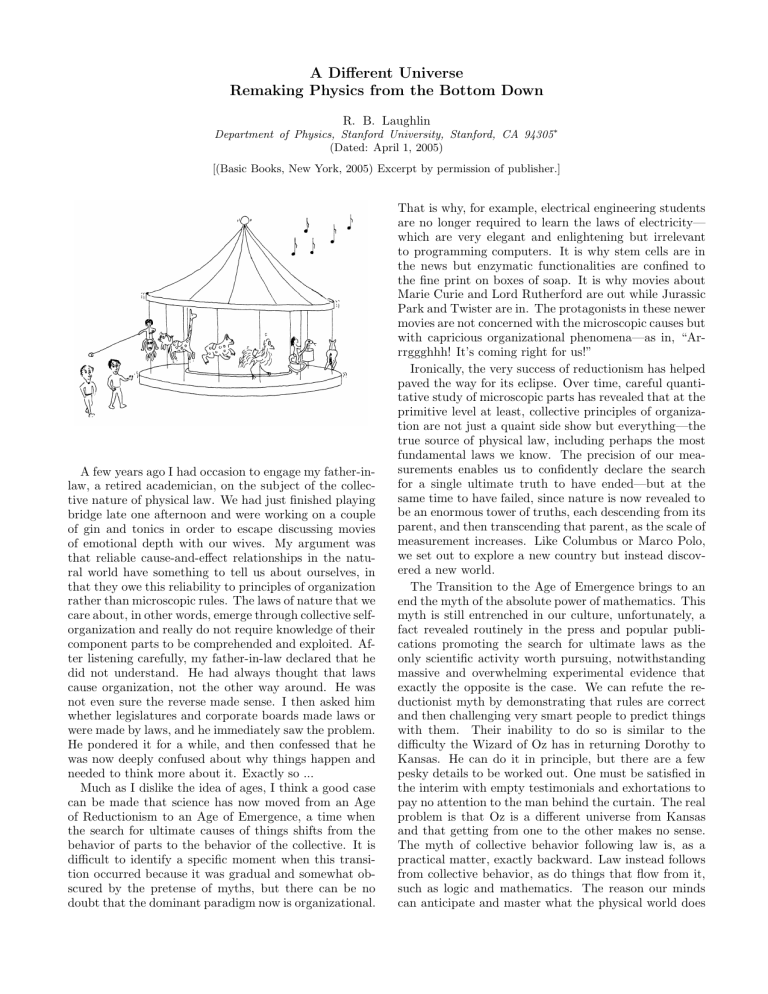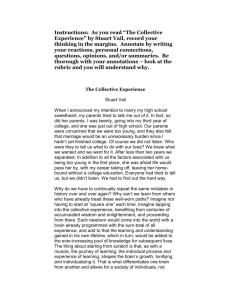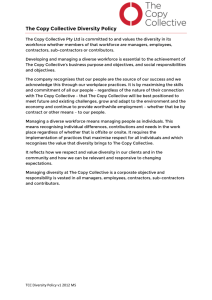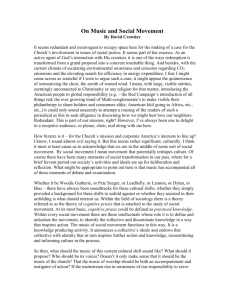A Different Universe Remaking Physics from the Bottom Down

A Different Universe
Remaking Physics from the Bottom Down
R. B. Laughlin
Department of Physics, Stanford University, Stanford, CA 94305 ∗
(Dated: April 1, 2005)
[(Basic Books, New York, 2005) Excerpt by permission of publisher.]
A few years ago I had occasion to engage my father-inlaw, a retired academician, on the subject of the collective nature of physical law. We had just finished playing bridge late one afternoon and were working on a couple of gin and tonics in order to escape discussing movies of emotional depth with our wives. My argument was that reliable cause-and-effect relationships in the natural world have something to tell us about ourselves, in that they owe this reliability to principles of organization rather than microscopic rules. The laws of nature that we care about, in other words, emerge through collective selforganization and really do not require knowledge of their component parts to be comprehended and exploited. After listening carefully, my father-in-law declared that he did not understand. He had always thought that laws cause organization, not the other way around. He was not even sure the reverse made sense. I then asked him whether legislatures and corporate boards made laws or were made by laws, and he immediately saw the problem.
He pondered it for a while, and then confessed that he was now deeply confused about why things happen and needed to think more about it. Exactly so ...
Much as I dislike the idea of ages, I think a good case can be made that science has now moved from an Age of Reductionism to an Age of Emergence, a time when the search for ultimate causes of things shifts from the behavior of parts to the behavior of the collective. It is difficult to identify a specific moment when this transition occurred because it was gradual and somewhat obscured by the pretense of myths, but there can be no doubt that the dominant paradigm now is organizational.
That is why, for example, electrical engineering students are no longer required to learn the laws of electricity— which are very elegant and enlightening but irrelevant to programming computers. It is why stem cells are in the news but enzymatic functionalities are confined to the fine print on boxes of soap. It is why movies about
Marie Curie and Lord Rutherford are out while Jurassic
Park and Twister are in. The protagonists in these newer movies are not concerned with the microscopic causes but with capricious organizational phenomena—as in, “Arrrggghhh! It’s coming right for us!”
Ironically, the very success of reductionism has helped paved the way for its eclipse. Over time, careful quantitative study of microscopic parts has revealed that at the primitive level at least, collective principles of organization are not just a quaint side show but everything—the true source of physical law, including perhaps the most fundamental laws we know. The precision of our measurements enables us to confidently declare the search for a single ultimate truth to have ended—but at the same time to have failed, since nature is now revealed to be an enormous tower of truths, each descending from its parent, and then transcending that parent, as the scale of measurement increases. Like Columbus or Marco Polo, we set out to explore a new country but instead discovered a new world.
The Transition to the Age of Emergence brings to an end the myth of the absolute power of mathematics. This myth is still entrenched in our culture, unfortunately, a fact revealed routinely in the press and popular publications promoting the search for ultimate laws as the only scientific activity worth pursuing, notwithstanding massive and overwhelming experimental evidence that exactly the opposite is the case. We can refute the reductionist myth by demonstrating that rules are correct and then challenging very smart people to predict things with them.
Their inability to do so is similar to the difficulty the Wizard of Oz has in returning Dorothy to
Kansas. He can do it in principle, but there are a few pesky details to be worked out. One must be satisfied in the interim with empty testimonials and exhortations to pay no attention to the man behind the curtain. The real problem is that Oz is a different universe from Kansas and that getting from one to the other makes no sense.
The myth of collective behavior following law is, as a practical matter, exactly backward. Law instead follows from collective behavior, as do things that flow from it, such as logic and mathematics. The reason our minds can anticipate and master what the physical world does
is not because we are geniuses but because nature facilitates understanding by organizing itself and generating law.
∗ R. B. Laughlin: http://large.stanford.edu
2









